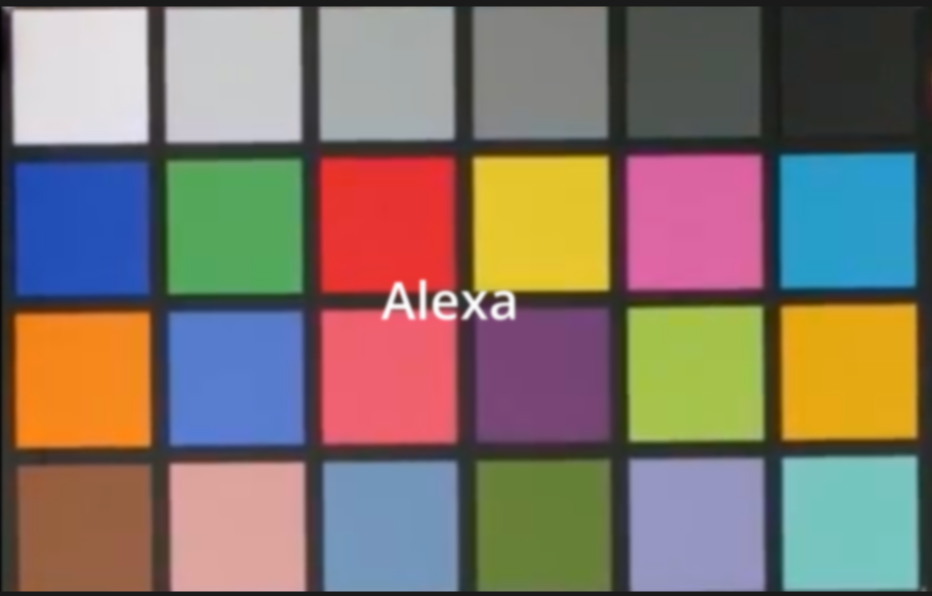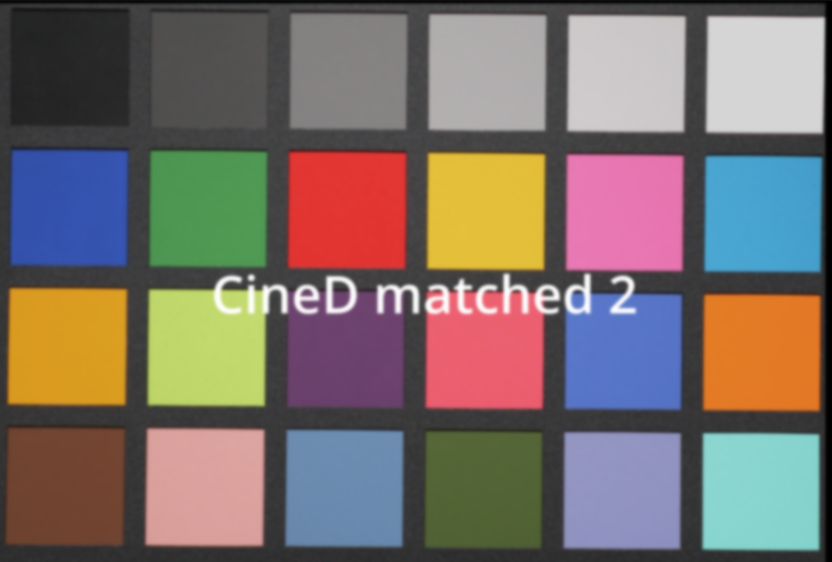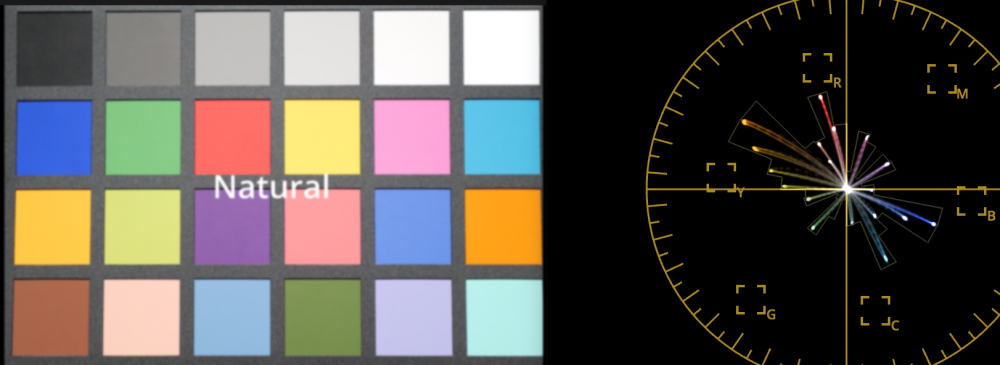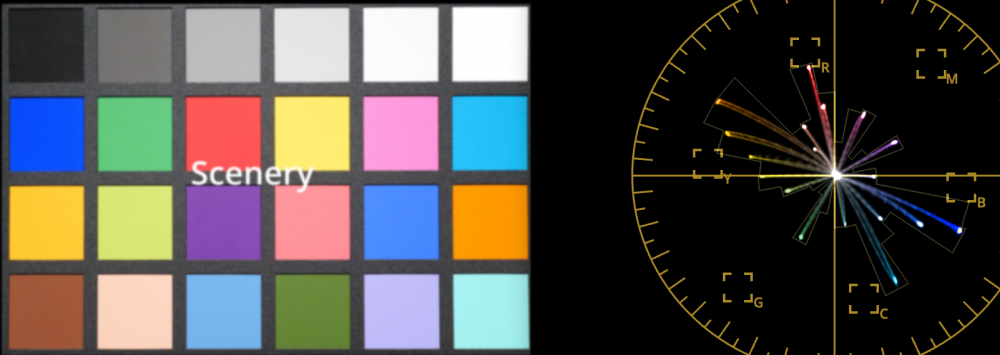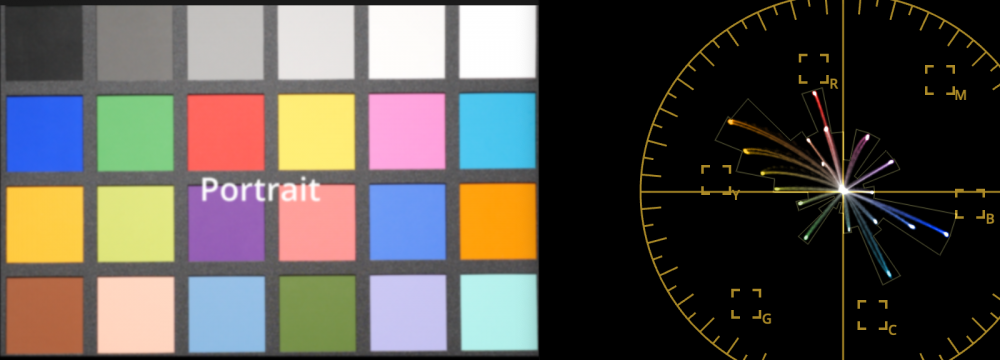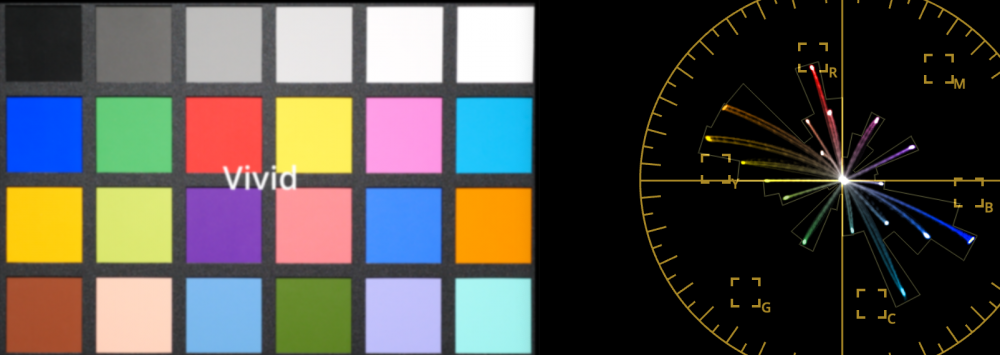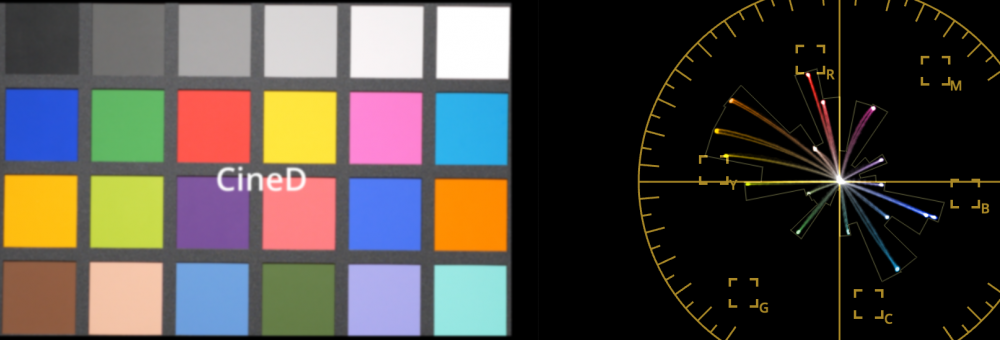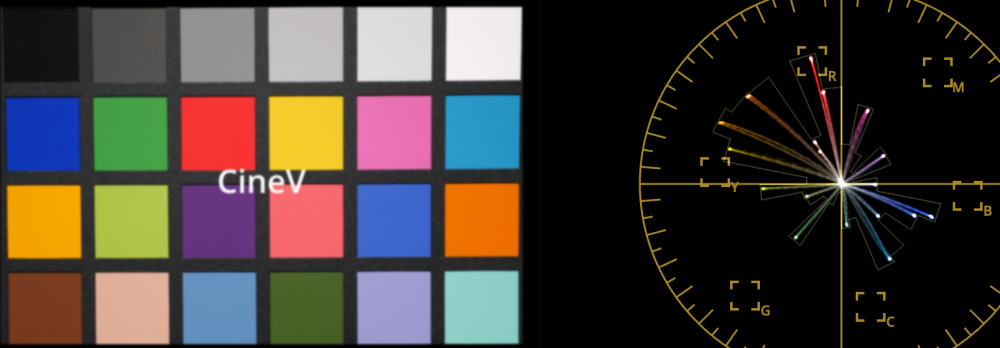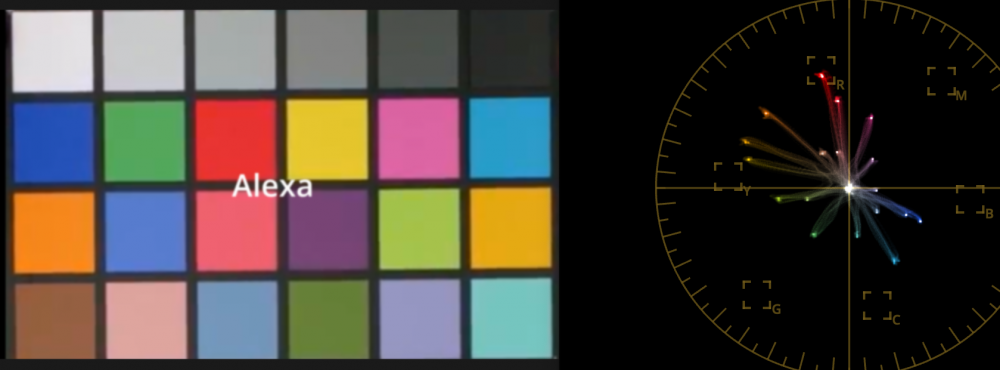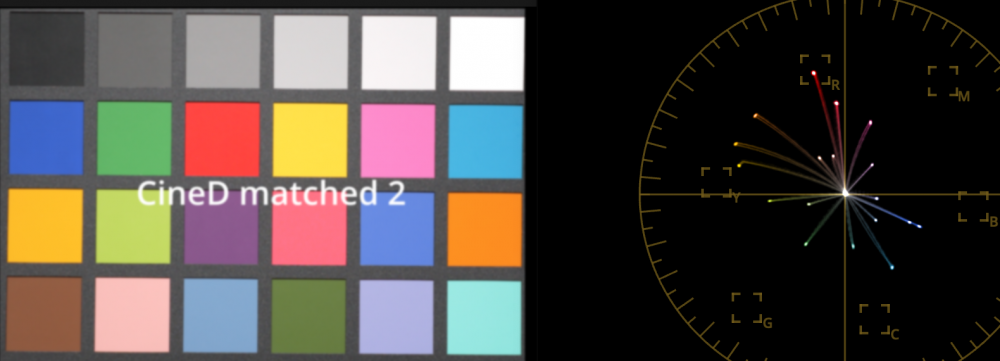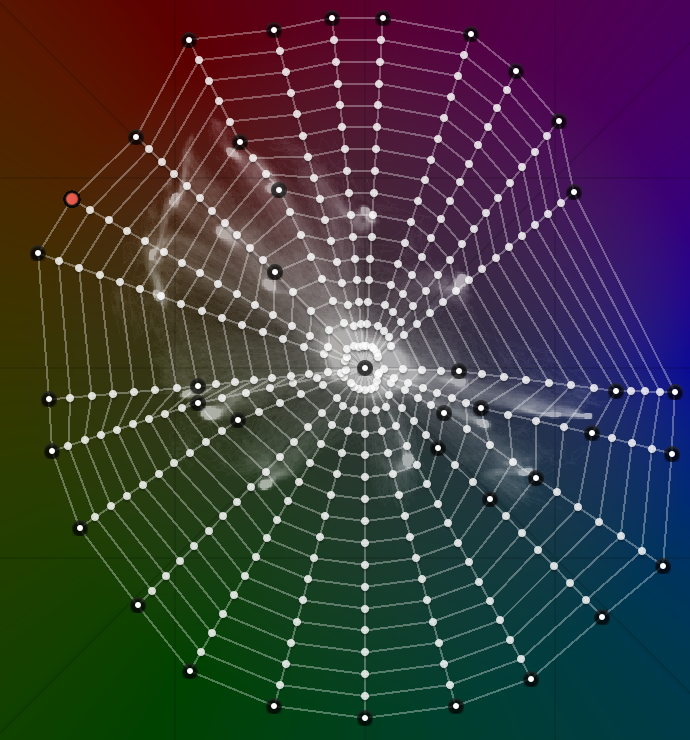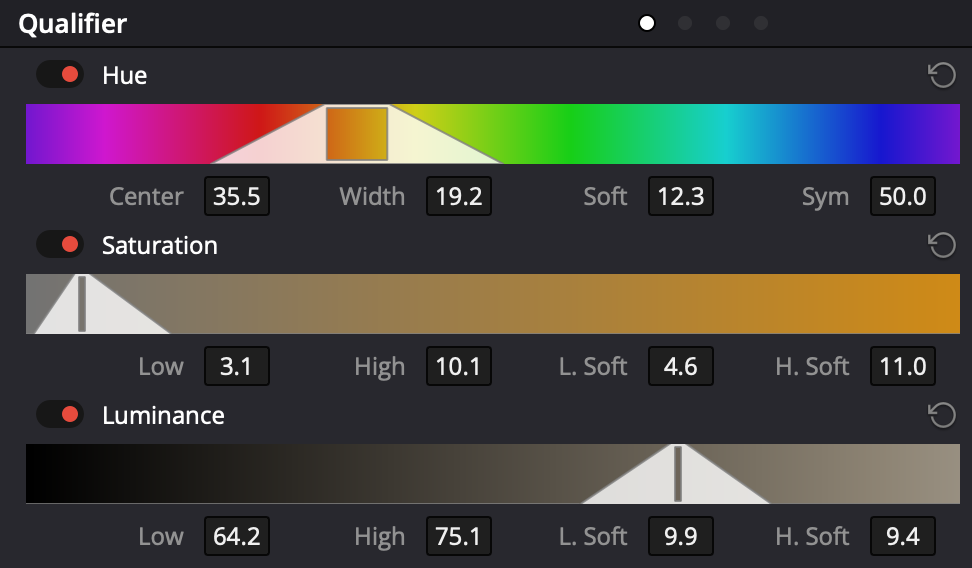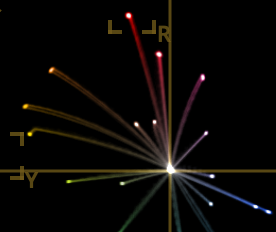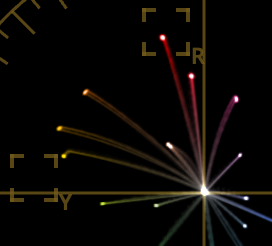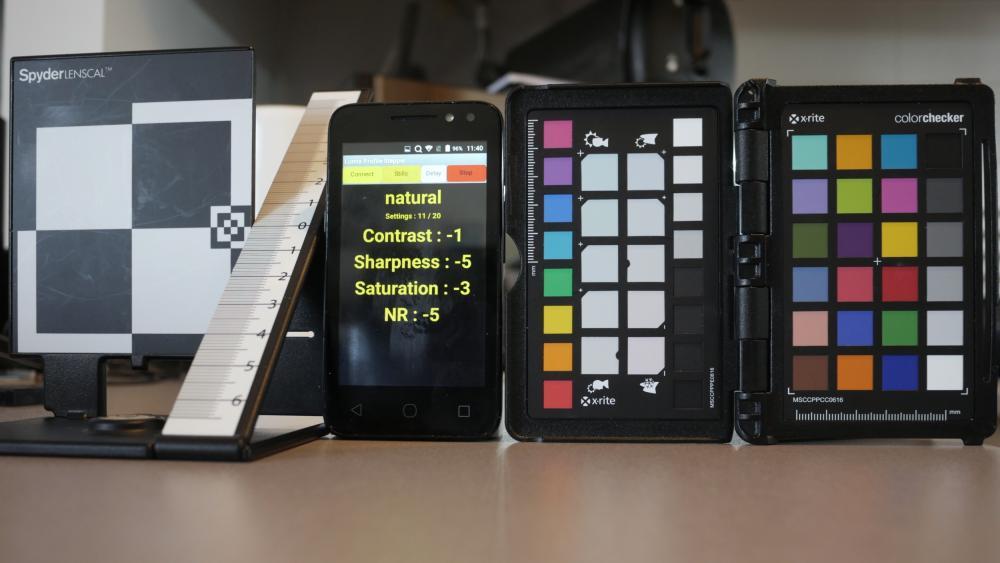Leaderboard
Popular Content
Showing content with the highest reputation on 11/28/2021 in all areas
-

GX85 Alexa Conversion!! (and Colour Profile Investigations)
projectwoofer and 2 others reacted to kye for a topic
Attempt #3 Added in some Luma adjustments. We're starting to get into pretty tricky territory here, as you'll see from the curves, so this is where I start saying near enough is good enough. Plus, with a checker we're still firmly in theory-land and who knows what will happen with real footage. Alexa: CineD: This was accomplished with this Hue vs Luma curve: There are still some challenges though, like the olive green is way too dark, but bringing it up with a Hue curve will bring up the other greens, or if I make the curve specific to the olive patch then is likely to break real footage, especially 8-bit footage. It's a similar story with the brown patch. I could go on to soft qualifiers etc etc, but you literally have no idea what colours that aren't on the chart you're severely messing up, and this is where the brain starts having problems thinking about subtle shifts within a 3D space. Plus, to get this match, I had to apply a luma curve to the CineD footage that matched the levels, which would mean that using this on real footage would darken everything, but that's not sensible in a real-world situation. Time for real footage.3 points -
I remember testing the XC10. On paper it seemed like an affordable C-line camera but in practice I remember problems with WideDR & CLOG. I dismissed that camera immediately because of that. Getting back to the C70, a super nice feature is the possibility to import LUTs directly in the CP settings. So you could bake in CLOG with a tailored LUT. This alone is a game changer for my workflow. I have this setup as well on my FS7 in Cine EI mode (usually with Venice LUT). For fast turnaround projects with a specific look in mind this comes clutch. Again key feature missing from the hybrid R line and the A7S/FX3.2 points
-
Now I've "made friends" with the GX85, I'm now looking at its colour profiles. I've installed the CineD / CineV hack from @BTM_Pix so are including these in my testing. In these tests, I'll be: Looking at what the colour profiles actually do, with a colour checker and scopes Comparing these profiles to the colour profiles of the P2K and Alexa Grading selected GX85 colour profiles to match resemble the P2K and Alexa Working out what the best combinations might be and just generally working out what setup I will implement First, what do the colour profiles actually do? I took the GX85, 12-35mm f2.8 lens (at 35mm) in the 100Mbps 4K mode, and shot my colour checker in direct sunlight. I then brought those into Resolve, cropped, and blurred a little for cleaner traces in the scopes. I actually clipped the white square on the checker a little, oops!, but no test is perfect and neither am I, however I think the results should still be useful. Here goes..... Natural - let's use this as the baseline. For those unfamiliar with these kinds of tests, it is worth noting a few things though: Firstly, this profile is NOT NEUTRAL. Anyone who's seen a colour checker in real life can tell you that the colours in the two middle rows (the two below the greyscale) are all about equally saturated - ie, very saturated. These are the colours that are meant to go in the little reference boxes on the scope. Notice how the red trace almost reaches the R box? Notice how the pink and purple boxes look really pastel? Overall the profile is much more saturated in the upper-left (orange) and lower-right (teal) directions. This is a relatively typical colour palette that looks pleasing. Also notice how the colours are rotated towards those two directions? it's especially noticeable in the teal direction where the blue is rotated clockwise towards the Cyan reference box, and the cyan is rotated anti-clockwise towards the Blue reference box. These characteristics give a nice starting point, and are very commonly seen in colour profiles in general, although as the name says, this is a relatively Neutral implementation of that look. Scenery - it's basically the Natural profile with more saturation, except notice the green is pushed slightly towards blue to give a but more hue separation in the greens. Oddly enough, that might help give visual interest with scenery shots! Portrait: Similar to Natural but more saturation (less than scenery) but this one slightly compresses the skin-tone ranges, pulling the yellows towards orange and the reds slightly towards orange too. This helps to mask blemishes and uneven skin. Nice. Vivid is..... vivid. Panasonic really deliver huh! Like natural but with heaps of saturation. CineD. The legend. Lots going on here! Here's what I see: Slight compression of skin-tones and desaturating right on that hue Higher saturation of all colours except yellow-greens (a hue I know I dislike) and mauve (a hue named after an old lady) Also slightly compressing tones in the teal direction CineV which is obviously more contrasty with a much lower black level, and consequently is also more saturated than CineD, but is also slightly more "correct" with some hues being closer to their theoretically correct locations, for example, the Red is now almost perfect. If you take CineD and pull the shadows down then you get something very similar to CineV, only with more saturation (contrast creates saturation). If you then drop the saturation a touch to match, you notice that CineD creates more even saturation between the warm tones and cooler tones, whereas CineV has more saturation on the warmer tones and less on the cooler tones. Note, this isn't a WB difference - this is with the WB set correctly on both profiles. TLDR; Natural profile isn't natural, but is a moderate amount of a relatively common colour profile pushing things towards orange and teal, and compressing skintones for more flattering skin rendering. Other profiles kind of build on this foundation and kind of do what they imply with their names. CineD and CineV are a bit more complex again, with the main difference being the amount of contrast.1 point
-

GX85 Alexa Conversion!! (and Colour Profile Investigations)
Mark Romero 2 reacted to kye for a topic
Attempt #2. This time I used a more sophisticated approach, and matched on all the patches in the colour checker. Alexa: CineD: This is almost a perfect match.......if all you ever film is colour charts! To get this I started again, and used the Colour Warper but with the highest number of points it allows, and ended up with this: Things to note: The points with black outlines are points I've adjusted The white patches below the spiderweb is the image data There are entire radial arms with no image data below it to match - this is the challenge of having a colour checker with limited numbers of points... if this were a real matching then I would need thousands of points to compare. For the sake of this process, I simply took the areas that had no data and spaced them out relatively smoothly This spider curve only adjusts hue and saturation, but ignores luminance, and was mis-matching the skin tone next to the brown patch. For this, I did a qualifier and adjusted hue and saturation to match, making the qualifier as soft as possible while not messing up the other points. This was the qualifier: In plain English, this takes lighter skin tone hues on the brown side and shifts them towards pink. Without this adjustment, instead of getting this: You get this: I still haven't matched the WB or Luma...1 point -

GX85 Alexa Conversion!! (and Colour Profile Investigations)
Mark Romero 2 reacted to kye for a topic
It's laughable in terms of how crude it is when you look at colour science and colouring as a whole. I have re-watched every Juan Melara video a dozen times or more and I've gotten to the point of understanding (almost?) everything that's going on in those videos. I had to watch, rewatch, follow along and recreate them, and even research techniques and terminology to get to this point, so it was literally studying. I say that not to brag, but as context for the following: I regularly see content on the colourist forums that is significantly more complex than anything Juan has included in his videos I see colour grading issues with a lot of online content, and am starting to see it in lower-budget TV shows now too I regularly see colourists talking about differences in looks that are so subtle I can't even tell the difference, and yet they are having a nuanced and productive conversation about it, so not only can they see it, but they're able to break it down and discuss it However, here's the rub - getting great colour is 95% the basics and 5% the complicated stuff. You can literally get 80% of the results of a high-end show by: Use any RAW-shooting camera Light well and within the limits of your camera Expose it properly, and shoot a grey-card Applying the manufacturers 709 conversion Grade using only the RAW controls, the Contrast/Pivot/Offset and the LGG controls That's it And if you are willing to compromise even further, to get maybe 50% of the results of a high-end show, all you have to do is: pick a camera released in the last decade point it at something interesting1 point -

Canon R3 6K raw light with FD lenses
BenEricson reacted to kye for a topic
Anamorphic flares - built in! Suggest it's deliberate, charge the client more, and declare victory!! When I got the XC10 I read about the various colour profiles and WideDR seemed to be the profile with the best reputation so I was excited to use it, especially with the 8-bit codec of the camera, but yeah, it had huge noise problems and wasn't up to it. Sounds like you're across the saturation situations then. I think it's one of those things that's really personal, and there's no doubt that RAW has more potential for sharpness than compressed codecs. Or, at least, for sharpness that doesn't just look like emphasised compression artefacts. You're right about the operator being the limiting factor in most camera content that's posted online. I've been hammering away at this stuff for years now and I know enough to know that I may never know enough to be "better" than my GH5, OG BMPCC or BMMCC - even as long as I live. Enjoy your Komodo when it arrives 🙂1 point -
Indeed, people have no need for extra expense these days but it's rare to see someone like you researching and loving cameras like you, yet, just for the sake of a good picture : ) hats off :- ) Expecting for the next camera today is pure nonsense... Tomorrow is there! - EAG1 point
-

GX85 Alexa Conversion!! (and Colour Profile Investigations)
TrueIndigo reacted to kye for a topic
My GX85 cost me about 30% of what my GH5 cost, but the more I use it the more impressed I am by it. If I didn't have a GH5 for some reason, I could get by with just this camera, and would enjoy the process too.1 point -

GX85 Alexa Conversion!! (and Colour Profile Investigations)
Mark Romero 2 reacted to kye for a topic
You're not missing the point at all - the "conversion" I've done above is scratching the surface so little that my post is practically a stand-up comedy routine. The vector scope does ignore luminance, so you're right there, but it's more complicated than that. Here's a few thoughts: Firstly, it's not possible to do a "real" match between two cameras unless you know where middle grey is, as that's the luminance level that you will be using these cameras at for exposing skin-tones and so camera profiles typically leave this luma at the set WB but are free to push the balance of everything brighter and darker than this point (e.g., warmer highlights and cooler shadows are very common) and as you're meant to use a colour checker by having the brightest square just under clipping and the cameras have different dynamic ranges the middle grey will be different and might not even be on that scale LUTs are most often 3D LUTs because the transformation is in 3D, meaning across hue / saturation / luminance (HSL). This means that while I've matched the hues at those levels of S and L, the same H could be different at literally every other combination of S and L. Colour profiles and colour science are hugely subtle things, relying on very small tweaks all across the HSL 3D space. To match cameras truly you need to point the cameras at all the combinations of H S and L and then make a transformation that pushes one 3D lattice to the values of the other one. This is what @Sage did in his GHAlex work. I have a theory that even this isn't enough because it sits on top of the cameras WB, but that's a different story. The practical concern of the above is that I have matched a few strongly saturated hues but haven't matched the less saturated ones, which is where the skintones sit. The charts do have some of these, so there's another level I can go to with what I have. As I mentioned above in my reply to @BTM_Pix I also forgot to match the greyscales, but that's subject to middle-grey considerations, so not sure how well I could do that. Having said all that though, I've done simple hue matching (Hue vs Hue, Hue vs Sat, Hue vs Lum) to "match" radically lesser cameras to greater ones before (GF3 to P2K) and as crude as these adjustments are (and they are so tremendously crude as to basically be a joke) the resulting images certainly benefit considerably from that treatment. The spirit of this is really that doing a "conversion" is impossible, my approach is laughably inaccurate, but there are still benefits to be had. Both from learning along the way as well as getting something useful to use afterwards.1 point -
Great thread as usual as your standard has already become a common place to all of us beyond any differences or distinct angles for the subject matter : ) Pleasant read on such marvelous GX85 piece, a dream made camera :- )1 point
-
Canon R3 6K raw light with FD lenses
kye reacted to BenEricson for a topic
Not sure. Wide DR on the C300 or C70 is rad. It's basically the neutral profile on a DSLR. It looks good enough to hand off to the client but also saves some data on the top and the bottom of the image. There's no crazy digital sharpness or noise reduction applied. That being said, the DGO sensor is only promised to perform better at native ISO. This is documented on the Canon site. I see what you're saying. I think the C70 would handle this better. The problem is that there's not any more DR in the highlights, so if you're trying to avoid clipping the window, you'll still be stuck with a noisy room unless you add more light. With the Alexa, you might be able to open up another stop or two, not only that the highlights would be so much softer even if they clipped. I think any of those cameras can create beautiful images. The C70 or C300 will just be less fuss and you'll probably have more fun operating the camera. I feel like I didn't mention this earlier... The battery life on the C70 is absolutely crazy. You can run that camera for around 5/6 hours of continuous recording with just one battery. I think the power draw is one half of the C300 Mkii and one quarter the draw of the C500 Mkii. These are little things that people don't really talk about but make a huge difference. Thanks! I definitely have. The sharpest images I could get were with the C70 is 4K in a 4K timeline with around 15 percent sharpness. There's just a level of sharpness that a camera like the Komodo can reach that any of the C series cameras in my experience do not reach. I'm going to agree with what you've said in the past though... The color grading and handling of the images in post will really determine the final quality. I would say that well shot C70 or C300 footage will be much better than 95 percent of the Komodo tests online. That being said, the same DP who did well with the C70 will likely do even better with a Komodo. That's just my personal observations. I own the C70. It was a great camera this year. I'm buying the Komodo in December and i'll be using those as my A and B cams for freelance jobs.1 point -

A7IV opinions
Mark Romero 2 reacted to lebigmac for a topic
I fear, the AIV with '131 x 96 x 80 mm, 659 g' is no less bulky than the S5 (133 x 98 x 82 mm, 714 g). I loved the look of my Minolta lenses on the A7 m I, and I really hope, the A7IV would perform the same way, despite the higher resolution sensor. Ibis is certainly big plus for the S5, although the cropped in electronic IS on the Sony seems to narrow that a bit.1 point -
GX85 Alexa Conversion!! (and Colour Profile Investigations)
projectwoofer reacted to Mark Romero 2 for a topic
Would love to see some of your work using the S1Alex Alexa lut. Also, are you grading in resolve? If so, what color management are you using?1 point -
GX85 Alexa Conversion!! (and Colour Profile Investigations)
PannySVHS reacted to Mark Romero 2 for a topic
1 point -
One tasty read! Thank you very much. Quality and fun stuff. Very grateful, puts a warm feeling in my heart n mind! I think Lumix cams have a great colour palette as a start for grading, that´s G6, G7, GX85 and GH5 from my experience. S1 is a bit trickier to grade, with superiour possiblities and wiggle room but also more chance of hitting the wrong note so to say. GX85 is a beauty. Too bad is starts producing mudd under lower light conditions. But lighting for 800iso and F2.8 still gives perfect results, 1600 is limit under sufficient light.1 point
-

How Jordan of DPReview showcases flexibility of RAW video (lazily)
kye reacted to The Dancing Babamef for a topic
That is correct, although they don't pump out reviews that often. Their reviews are often followed by ads or product showcases.1 point -
If you want to drill down into the different permutations of the elements within the profiles then I'd humbly suggest that you have a look at my profile stepper application which will automate the process for you. Here are examples of it being used on an FZ2500 (but obviously works on the GX85 and all other Panasonic cameras) to run through the contrast and saturation permutations of the profiles. CINE LIKE D SCENERY VIVID You can choose as many or as few parameters to change as you wish and the range of them so in these examples I'm only looking at Contrast from -5 to +2 and Saturation from -5 to +3 but you can go the whole hog if you wish to and do +5/-5 on every parameter if you are looking for a total in-camera look for example. I'd be tempted to include the NR one as it will have an impact on colour. The interval for the parameter changes in those videos are set to 3 seconds but you can adjust it obviously in the app. Its easy to generate the subtitle file to embed into the video like I've done here if you wish but it has a display mode whilst running so you can just use the screen of the phone/tablet to show the changes like below. Unfortunately, the shadows and highlight controls are not accessible externally so can't be included in the automation so especially if you are looking for a total in-camera look (or just for completeness) then once you are in the ball park of the profile that you want then I would be inclined to re-run the stepper with smaller permutation changes of contrast and colour only with manually set shadows and highlights permutations.1 point
-
How Jordan of DPReview showcases flexibility of RAW video (lazily)
TheRenaissanceMan reacted to austinchimp for a topic
Now I haven't watched the review itself, but aren't we being a bit harsh here? I find this a useful - if basic - demonstration of the DR and a quick and dirty grade. It's an ugly shot, sure. It's not a Hollywood level production, but if I'm being honest this is the kind of shot I end up with in my edits frequently, and the kind of shot you want to know you can salvage something 'usable'. Not spectacular or perfect, but usable, and in that case this is a good demonstration. If you're expecting world-class images from both a technical and artistic standpoint then go see Dune in the cinema or watch any number of big-budget movies. This is a low/no budget camera review. As a content maker myself I can see what he was trying to do, and it was adequate in my view. I don't like this attitude of piling on on somebody for one shot that you personally might have done different. Or perhaps all of our work is beyond reproach with every shot a masterpiece?1 point



